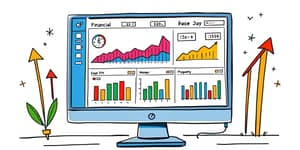
Every morning, millions wake up feeling overwhelmed by mounting bills, looming deadlines, and countless financial choices. When daily life demands over 35,000 decisions, even routine actions like paying a bill can feel like uphill battles. Decision fatigue creeps in, depleting concentration and raising stress levels. But there is a powerful remedy: adopting standard payment cycles. By introducing simplicity, routine, and automation into our financial habits, we can reclaim mental energy, avoid costly errors, and nurture our long-term financial health.
In this article, we explore the roots of decision fatigue, its impact on personal and business finances, and practical steps to build predictable payment routines. Discover how harnessing the science of automation can transform confusion into confidence and uncertainty into calm resolve.
Decision fatigue refers to the gradual decline in quality of choices after an extended period of decision-making. Studies show that each choice—big or small—uses up a portion of limited mental resources. When these reserves run low, we become prone to procrastination, impulsive actions, or avoidance. This decline is especially significant in financial contexts, where every transaction or bill demands cost–benefit analysis.
cognitive resources severely depleted explains why even minor questions—"When is my next payment due?"—trigger anxiety. Left unchecked, decision fatigue can spiral into missed deadlines, surprise fees, and chronic stress. Recognizing its effects is the first step toward building defenses that conserve focus for the decisions that truly matter.
Financial tasks—tracking spending, comparing bills, prioritizing debts—compound mental fatigue. Researchers find nearly half of consumers experience digital fatigue, and 39% of those are more likely to miss or delay payments. By contrast, only 6% of non-fatigued individuals fall behind.
Each late or skipped payment chips away at credit scores, incurs penalties, and erodes confidence. Impulsive spending may spike when willpower flags, further straining budgets. Over time, this cycle damages both personal wellbeing and long-term financial stability.
reduced mental load and stress is not just a lofty goal—it’s a necessity for healthier money habits. By imposing structure on when and how we pay, we can shield ourselves from constant financial scrutiny.
Behavioral science shows that habits, once formed, require minimal cognitive effort. Routine tasks become automatic, freeing our minds for more complex challenges. Similarly, automation removes repetitive decisions entirely. When you set up an automatic withdrawal or a recurring transfer, the choice vanishes from your daily to-do list.
Standard payment cycles—whether biweekly, monthly, or aligned with paydays—create predictable rhythms. This predictability fosters planning, reduces anxiety, and builds trust in one’s own systems. Over time, these small changes aggregate into significant improvements in financial wellness.
automating recurring monthly expenses leverages technology to keep you on track without intrusive alerts or endless reminders. It’s the intersection where behavioral science meets practical finance.
Adopting regular payment dates and automating them offers a powerful suite of advantages:
These benefits extend beyond personal budgets. Organizations that streamline billing cycles experience fewer collection challenges, more accurate forecasting, and stronger relationships with clients.
Whether you’re managing household expenses or running a company, taking concrete steps toward standardization and automation is straightforward. The following guidelines help individuals and businesses alike simplify their financial processes.
Consider a mid-sized subscription service that transitioned to standardized monthly billing. Within six months, late payments dropped by 60%, customer inquiries related to billing fell by 45%, and overall satisfaction scores rose by 20%. On the personal side, a freelance graphic designer who automated her rent, utilities, and savings transfers reported a 30% reduction in financial anxiety and a 15% increase in monthly savings.
These figures underscore how small procedural changes unlock profound psychological and operational gains. Each on-time payment builds momentum, reinforcing trust in your own systems and creating space for strategic financial planning.
Implementing a standard payment cycle need not be daunting. Follow these concise steps:
In a world inundated with choices, standardized predictable payment schedules and eliminate repetitive financial decision-making represent a lifeline. By embracing routine and automation, we can free our minds from the grind of constant decisions, reduce stress, and foster healthier spending and saving habits.
Whether you are an individual seeking financial peace of mind or a business aiming for operational excellence, the shift to standardized payment cycles is both practical and transformative. As you integrate these strategies into your daily life or organizational processes, you’ll witness tangible improvements in timeliness, compliance, and overall wellbeing.
Start today: choose simplicity over complexity, routine over randomness, and automation over anxiety. Your future self will thank you.
References













